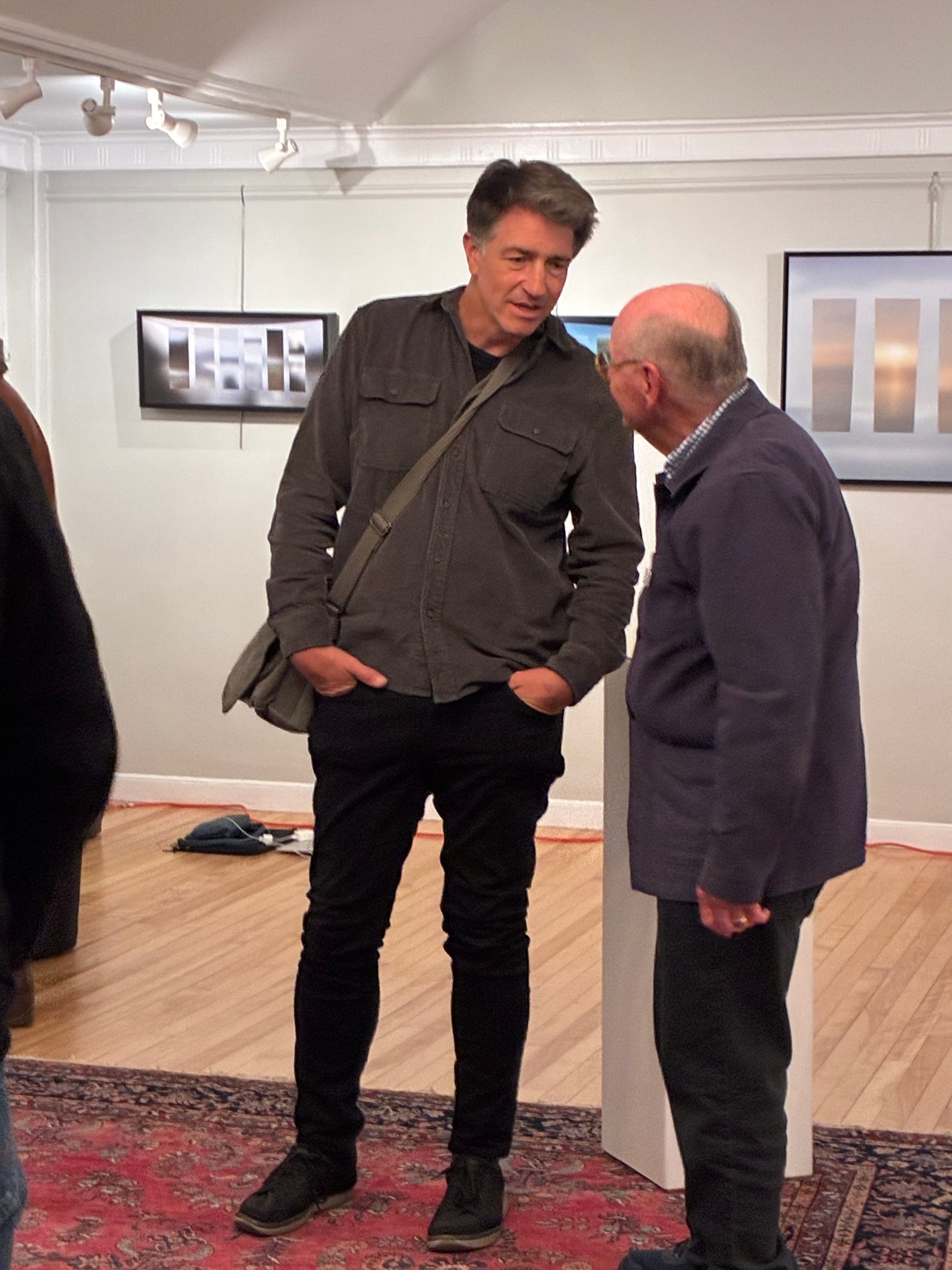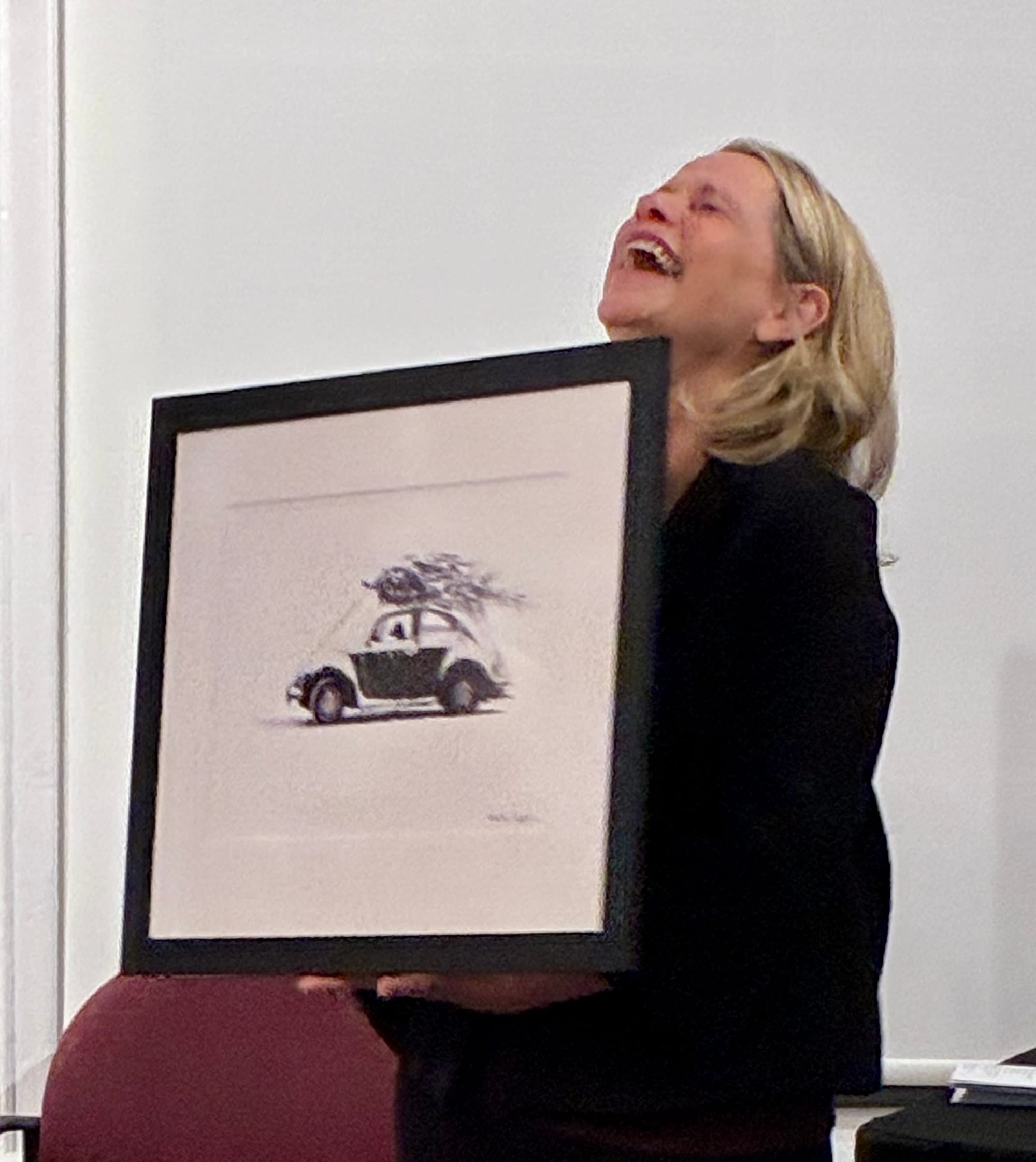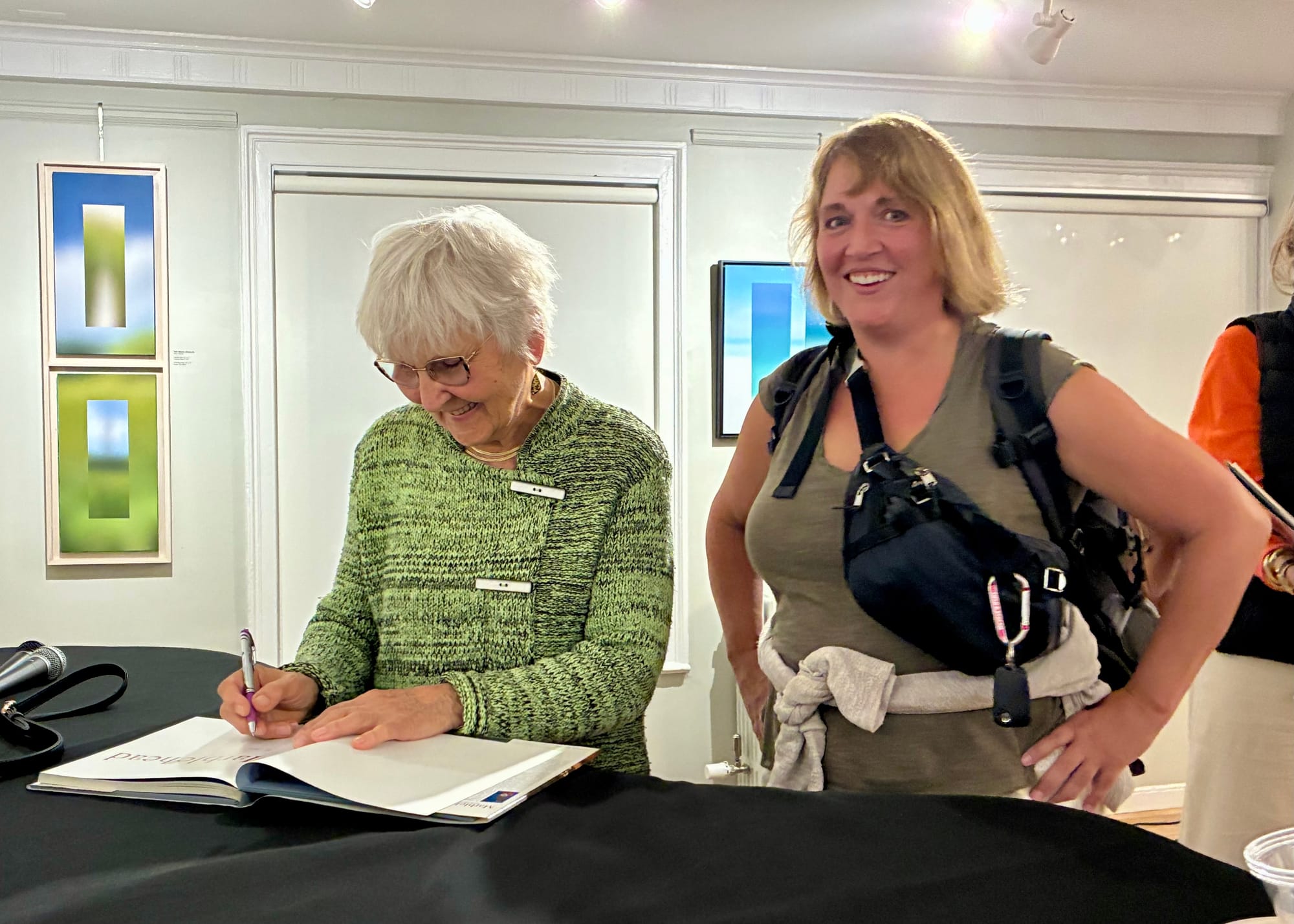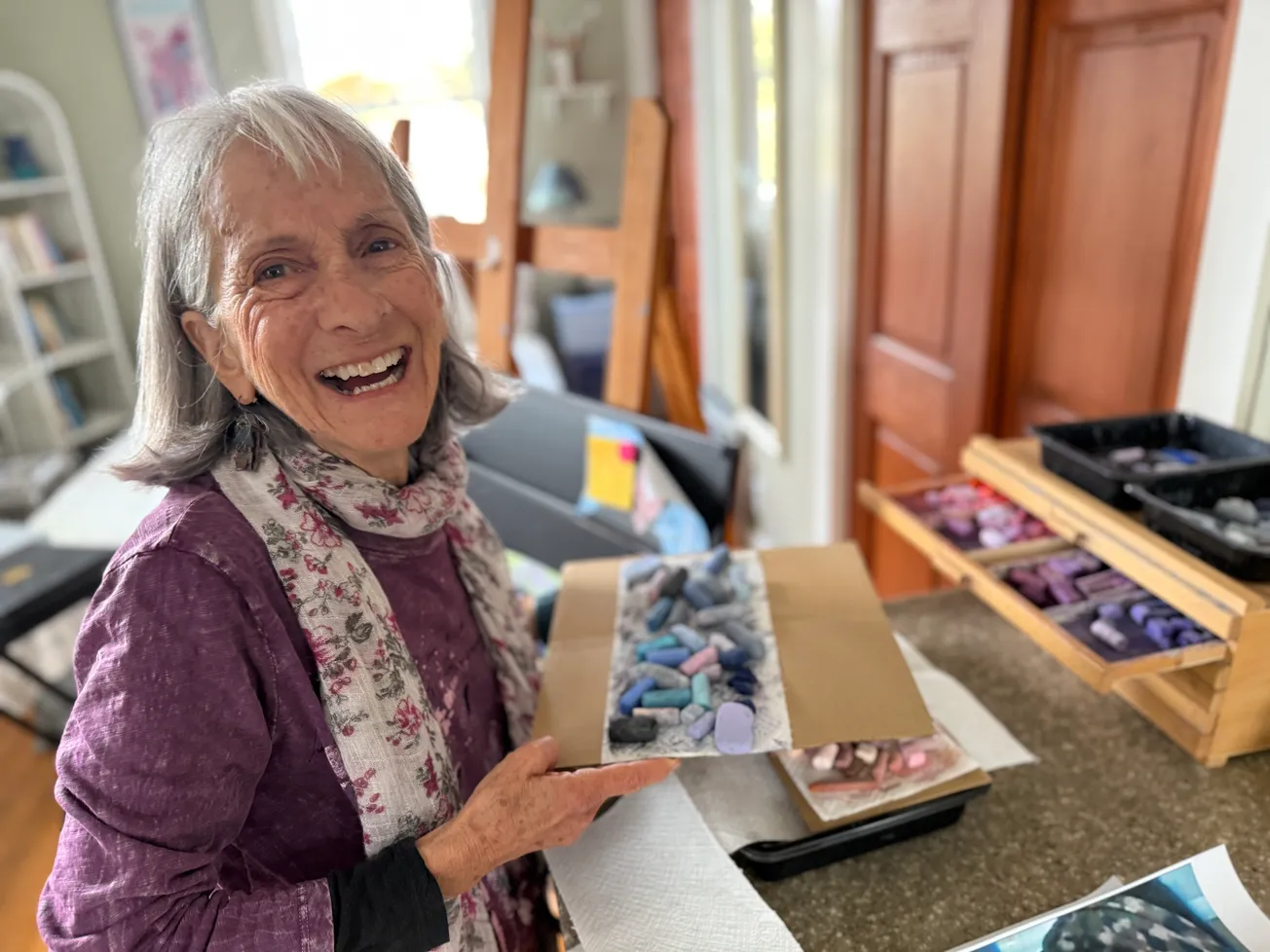Table of Contents
What is photojournalism all about? In the age of AI, is it even relevant?
Oh yes, according to those who not only do it but love it.
Photojournalism is, at its heart, about seeing, observing and being curious. It’s about looking at the world around you and seeing the extraordinary in the ordinary, according to Tanya Braganti. Capturing emotions and letting them drive the story, said Grey Collins. Seeing things in a different way, said Ulrike Welsch. And for Jared Charney, sometimes it’s about walking into someone’s story and being given the space to record it.
“I get to have that privilege,” he said.

Charney, Welsch, Braganti and Grey took part in The Marblehead Current’s “Capturing the Moment: The Art of Photojournalism,” a fundraiser for the nonprofit local paper held at the Marblehead Arts Association on Oct. 9.
The foursome shared their perspectives on an art form that, like everything these days, is riding the tide of changing times. Moderated by the Current’s editor-in-chief, Leigh Blander, they shared stories, advice and their thoughts on AI and the future of their beloved profession.
“It’s a very lucky profession,” said Braganti.
Braganti grew up in Marblehead and went to Boston University, where she didn’t study photography. She said it wasn’t until her last year in school she realized the only thing she really loved to do was take pictures. She ended up in New York, where she spent a decade shooting for the New York Daily News, covering stories such as the aftermath of 9/11, Ku Klux Klan rallies, Occupy Wall Street and celebrities. She is also a fan of shooting what she calls street photography.
“I think what makes photographers different from everyone else is we’re able to see things that maybe people just pass by,” she said.
Or sometimes it involves simply looking at something differently. She pointed to a portrait she took of a naked man standing at a urinal next to another man, also at a urinal but fully clothed in a jacket and slacks.
“This (naked) man was part of an exhibit walking around, and everybody was taking his picture, but I was like, ‘maybe if I follow him into the men’s room’ … so it’s just a way of thinking and having to anticipate,” she said.
Welsch, a retired Pulitzer Prize winner, also said being able to anticipate and shift gears on the fly is integral to the job.
Originally from Germany, Welsch said she learned to see when she moved to the United States in 1964 and to Marblehead in 1966. The first woman photographer at the Boston Herald Traveler and later the Boston Globe, Welsch said she was sent to shoot Cardinal Richard Cushing, former archbishop of Boston, delivering his last homily after retiring. While Cushing slipped into the cathedral through the back to deliver his homily, Welsch said the question became how would he leave.
“You have to have kind of fundamental anticipation,” she said. “That’s a very important thing for journalism.”

Welsch said she was on her feet waiting for him to move, and when she realized he was going down the aisle, she was on the ready, in the aisle moving backward. She said she was the only photographer there, and when he lifted his miter, “that was the decisive moment. That was luck and anticipation,” she said.
But sometimes the decisive moment doesn’t present itself quite so readily, Charney said. He could take 1,500 photos in a couple of hours, then have to whittle it down to 20 to give to an editor. Sometimes it’s about feeling that one particular photo is the right photo, he said.
Unlike his fellow panelists who are decades into the craft, Collins, a Marblehead High School junior, only started shooting photos three years ago, “but it’s profoundly changed the way I look at the world around me.”
Grey said just last year he was photographing a concert at one of the Marblehead schools when he got a text that the long, protracted and at times ugly teachers strike was over. He said he bolted from the concert, running nearly a mile to the high school, where he got to shoot his teachers jubilant at the news.
“It was a very difficult time, but for me to be a 17-year-old reporter covering it,” he said. “But it has changed my whole perception of journalism, and it taught me that photojournalism is powerful,” he said. “It can have the potential to capture emotions and bring people together.”
Different eras, different approaches
While their philosophy is similar, the four-person panel represented at least three very different eras and different approaches.
When Welsch started her newspaper career in 1966, black-and-white film was the only option. She said she learned early on that because newsprint wasn’t the greatest medium for black-and-white photos, her images needed to be impactful, strong and tell a story.
Charney and Braganti started their careers with film but then had to negotiate the segue to digital, while Collins has never known anything but shooting with a digital camera.
When asked how they approached an assignment, Welsch said, “it depends.”
She said you have to give thought to your vantage point by location — is it a fleeting, fast or time-consuming event? Who are the important people (and don’t forget to make notes on who you are shooting), she said.
Braganti said she looks for symmetry and emotion.
“I think there is an instinct, and it’s just one moment where everything kind of comes together,” she said.
She also said many times you have to be a little pushy to get into places and convince people that you’re worthy of being there.
“That’s a challenge,” she said.
For Charney, it’s all about the lighting and hoping he can manipulate the lighting for the most interesting shot.
“I think for me, it’s about just trying to capture as much of the story as I can within these frames,” Collins said. “It’s just capturing a raw, unfiltered human emotion behind every story.”

When it comes to AI, Welsch joked that as an old-timer she doesn’t have to worry about it, but the rest do. Collins said in this age of social media coupled with the political climate, people already distrust the media, so it will be about educating the public on newspapers having high standards and not using AI.
“I worry about minds being manipulated, not the newspapers,” Charney said.
He said AI can come in handy when he’s working on portraits, and some things photographers do with AI, like cleaning up an image or lightening up areas, were also done with film images in the darkroom.
But he does worry that kids glued to TikTok are being fed manipulated images “and that’s scary.”
He also worries about the job market and said he is grateful for local papers that allow him to continue to cover things in his own backyard that no one otherwise would know about.
“It’s just so essential that photojournalism continues, especially in small areas … because it humanizes people in times when people are constantly being dehumanized because of where they come from, what beliefs they have. Photojournalism humanizes people,” Collins said. “It brings us together.”







